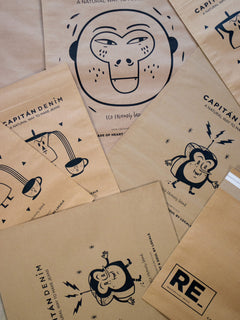Generational evolution of jeans
The pants an iconic garment
Fashion is an important expression of culture and human identity, this has evolved over time reflecting the changing values of society. One of the most prominent elements of modern fashion is the denim pant , a versatile and resistant garment that has become a staple in the wardrobes of both men and women around the world. However, there was a time in history when denim pants were considered inappropriate for women and their use was prohibited in many public places.
Here we will explore the history of how women began wearing denim pants and how this garment has become a feminist fashion icon.
Jeans, from work clothes to fashion
The first jeans date back to the 19th century, when they were originally designed as work clothes for miners and other manual labor. Made of a strong and durable fabric made with thick cotton yarns and a herringbone weave pattern. As denim pants gained popularity among workers around the world, they began to be adopted by people outside the workplace.
Who wears the pants?
Although denim pants were a unisex garment, in the first half of the 20th century, it was considered inappropriate for women to wear them in public. This was due to the conservative social norms of the time, which dictated that women had to wear skirts and dresses to show their femininity. Provoking that in public places such as restaurants and cinemas, there were explicit rules that prohibited the use of pants for women .
Change in dress codes
As the fight for women's equal rights gained momentum in the 1930s, many women began to challenge norms by regularly wearing pants, including denim pants. In 1934, fashion designer Elsa Schiaparelli created denim pants for women that had an elegant and stylized cut that adjusted to their bodies. This helped change the perception that pants were an exclusive garment for men, and thus encourage the use of this garment without compromising its femininity.
Wearing jeans as a symbol of rebellion
However, it was in the 1950s that denim pants really became popular among women. The 1956 film “Giant,” starring Elizabeth Taylor, was a huge hit and showed Taylor wearing denim pants. This helped popularize the wearing of denim pants in public, causing the fashion to spread to the streets. Young women adopted the casual and comfortable style as part of their youthful identity.
Since then, denim pants have become a staple in many women's wardrobes, expanding the variety in terms of design and style.




